Online marketplaces in Europe
In Europe, the most popular online marketplaces are Amazon and eBay. But of course, there are a lot more interesting platforms for retailers looking to sell their products to local customers. On this page you will find more information about the most popular marketplaces in Europe.
 Online marketplaces are here to stay. An increasing amount of small and medium-sized retailers join these platforms, to better reach their target audience (and eventually get sold to one of many Amazon seller acquisition companies). It’s thanks to the retailers who preceded them, that marketplaces have become a more popular destination for other sellers. Many consumers even don’t do a Google search for a product, they just go their favorite online marketplace and start their quest there.
Online marketplaces are here to stay. An increasing amount of small and medium-sized retailers join these platforms, to better reach their target audience (and eventually get sold to one of many Amazon seller acquisition companies). It’s thanks to the retailers who preceded them, that marketplaces have become a more popular destination for other sellers. Many consumers even don’t do a Google search for a product, they just go their favorite online marketplace and start their quest there.
Is your company the next Amazon? With Lightspeed or Shopify, both optimized for cross-border ecommerce, you can conquer Europe with your own online shop.
Popular online marketplaces in Europe
- The United Kingdom
- France
- Germany
- Greece
- The Netherlands
- Belgium
- Italy
- Lithuania
- Sweden
- Poland
- Portugal
- Switzerland
- Romania
- The Czech Republic
- Are we missing something?
The United Kingdom
In the United Kingdom, Amazon is the most popular online marketplace. However, there are also local marketplaces that are a popular destination for both online shoppers and retailers.
Add to Cart
 Add to Cart is a marketplace with a focus on small vendors, sellers pay a 10% commission instead of a monthly subscription fee. Currently, over 600 businesses and more than 500,000 products are listed on the marketplace.
Add to Cart is a marketplace with a focus on small vendors, sellers pay a 10% commission instead of a monthly subscription fee. Currently, over 600 businesses and more than 500,000 products are listed on the marketplace.
Fruugo
 Originally, Fruugo is from Finland. But the marketplace, founded in 2006, is now a UK company. The platform operates in 46 countries across the world. Retailers only pay when they make a sale, so there are no joining or setup fees.
Originally, Fruugo is from Finland. But the marketplace, founded in 2006, is now a UK company. The platform operates in 46 countries across the world. Retailers only pay when they make a sale, so there are no joining or setup fees.
OnBuy
 OnBuy was launched in November 2016 and offers a platform on which it doesn’t sell anything themselves (“and we never will”, they promise). The website connects over 3,000 sellers and 8 million buyers and asks a 5-9% sales fee and a 1.9-3.4% PayPal payment fee.
OnBuy was launched in November 2016 and offers a platform on which it doesn’t sell anything themselves (“and we never will”, they promise). The website connects over 3,000 sellers and 8 million buyers and asks a 5-9% sales fee and a 1.9-3.4% PayPal payment fee.
Secret Sales
 British marketplace Secret Sales used to be a members-only flash sales website, but it became a marketplace in 2020. It showcases over 700 brands and is active in the Netherlands and Belgium as well.
British marketplace Secret Sales used to be a members-only flash sales website, but it became a marketplace in 2020. It showcases over 700 brands and is active in the Netherlands and Belgium as well.
Non-local marketplaces with a significant market share:
| Amazon | ✔ |
| eBay | ✔ |
| Zalando | ✔ |
France
France is maybe the most marketplace-obsessed country in Europe. Not only does Amazon have a major market share, other local platforms are also very popular.
Cdiscount
 Cdiscount was founded in 1998 and started as an online retailer selling tech, IT and consumer goods. The online marketplace of Cdiscount represents 12,000 sellers and 9 million active customers. Every month, 20 million people browse the more than 63 million items. Sellers need to pay €39.99 per month, plus a commission rate on the sales, depending on the type of product sold (starting from 5 percent).
Cdiscount was founded in 1998 and started as an online retailer selling tech, IT and consumer goods. The online marketplace of Cdiscount represents 12,000 sellers and 9 million active customers. Every month, 20 million people browse the more than 63 million items. Sellers need to pay €39.99 per month, plus a commission rate on the sales, depending on the type of product sold (starting from 5 percent).
Conforama
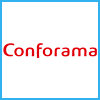 Conforama is one of Europe’s biggest home furniture retail chains of Europe. It was founded in 1967 and has stores in France, Spain, Portuga, Italy, Switzerland, Croatia, Luxembourg and Turkey. In 2016, it opened Marketplace by Confo.
Conforama is one of Europe’s biggest home furniture retail chains of Europe. It was founded in 1967 and has stores in France, Spain, Portuga, Italy, Switzerland, Croatia, Luxembourg and Turkey. In 2016, it opened Marketplace by Confo.
Conforama provides 1.5 million active offers on the marketplace, which recorded an average of 4.4 million visitors per month in 2018. Sellers don’t pay a monthly fee; commission depends on product category and is due on the selling price of a product, plus a shipping fee
Fnac Darty
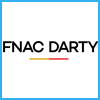 Darty, acquired by Fnac in 2016, is an electrical retail company from France. It launched its own online marketplace in 2014, selling products from themselves and from third party vendors. Fnac Darty Marketplace has 36 million active customers and is leader in high-tech, appliances and home products. The monthly subscription price is €39.99, plus a commission rate on the sales. Sellers can register on Darty and/or on Fnac.
Darty, acquired by Fnac in 2016, is an electrical retail company from France. It launched its own online marketplace in 2014, selling products from themselves and from third party vendors. Fnac Darty Marketplace has 36 million active customers and is leader in high-tech, appliances and home products. The monthly subscription price is €39.99, plus a commission rate on the sales. Sellers can register on Darty and/or on Fnac.
La Redoute
 La Redoute, founded in 1837 in France, is a retailer of apparel and home decor items. The online shop welcomes over 7 million visitors each month and operates in 26 countries across the globe. La Redoute has over 450 sellers connected to its marketplace, who pay 49 euros per month, plus a commission on sales (varying from 8 to 20 percent).
La Redoute, founded in 1837 in France, is a retailer of apparel and home decor items. The online shop welcomes over 7 million visitors each month and operates in 26 countries across the globe. La Redoute has over 450 sellers connected to its marketplace, who pay 49 euros per month, plus a commission on sales (varying from 8 to 20 percent).
Maisons du Monde
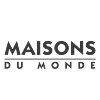 Maisons du Monde is a French furniture seller with brick-and-mortar stores in France and other countries in Europe. In 2020, it launched its online marketplace in France. The marketplace is now also active in Spain, with over 150 local brands and 20.000 items.
Maisons du Monde is a French furniture seller with brick-and-mortar stores in France and other countries in Europe. In 2020, it launched its online marketplace in France. The marketplace is now also active in Spain, with over 150 local brands and 20.000 items.
Rue du Commerce
 Rue du Commerce, founded in 1999, is a French online marketplace that’s focused on consumer electronics. From 2016 to 2019, it was part of Carrefour, a major French supermarket chain. There is no signup or listing fee, but sellers need to pay 40 euros per month. There’s also a commission rate on sales, depending on the product category.
Rue du Commerce, founded in 1999, is a French online marketplace that’s focused on consumer electronics. From 2016 to 2019, it was part of Carrefour, a major French supermarket chain. There is no signup or listing fee, but sellers need to pay 40 euros per month. There’s also a commission rate on sales, depending on the product category.
Non-local marketplaces with a significant market share:
| Amazon | ✔ |
| eBay | ✔ |
| Zalando | ✔ |
Germany
In Germany, both eBay and Amazon are very popular. But it’s also home to major local online marketplaces.
Real.de
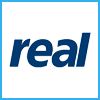 Supermarket chain Real merged with online marketplace Hitmeister.de and it became the third biggest online marketplace of Germany. On real.de, which attract 19 million visitors every month, over 12 million products are listed. There are no contracts for selling on Real.de, but sellers need to pay €39.95 every month and a percentage, varying on the category.
Supermarket chain Real merged with online marketplace Hitmeister.de and it became the third biggest online marketplace of Germany. On real.de, which attract 19 million visitors every month, over 12 million products are listed. There are no contracts for selling on Real.de, but sellers need to pay €39.95 every month and a percentage, varying on the category.
Otto
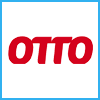 Otto is the biggest German ecommerce company. The online store features over 1.8 million products from about 7,000 brands. It operates in over 20 countries, of which most are in Europe. Sellers who want to sell through the online marketplace of Otto need to pay a one-off signup fee of 10,000 euros, while commission rates range from 15 to 50 percent. There’s no monthly fee.
Otto is the biggest German ecommerce company. The online store features over 1.8 million products from about 7,000 brands. It operates in over 20 countries, of which most are in Europe. Sellers who want to sell through the online marketplace of Otto need to pay a one-off signup fee of 10,000 euros, while commission rates range from 15 to 50 percent. There’s no monthly fee.
Zalando
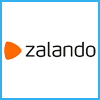 Zalando became popular as an online fashion retailer, but has transformed into an online marketplace. The German power house is online in 15 countries across Europe. Brands that want to sell their products through Zalando need to know that products from categories other than clothing, shoes, sportswear and equipment, and accessories will not be accepted. Also, partners need to offer free returns and follow the 100 day returns policy.
Zalando became popular as an online fashion retailer, but has transformed into an online marketplace. The German power house is online in 15 countries across Europe. Brands that want to sell their products through Zalando need to know that products from categories other than clothing, shoes, sportswear and equipment, and accessories will not be accepted. Also, partners need to offer free returns and follow the 100 day returns policy.
Other online marketplaces in Germany to keep in mind: Yatego, DeWanda.
Non-local marketplaces with a significant market share:
| Amazon | ✔ |
| eBay | ✔ |
Greece
Some major online stores in Greece are Public.gr, E-shop.gr, and Kotsovolos. Public.gr, founded in 2005, is a chain of department stores that sells consumer electronics, books, toys, fashion, media, and more. E-shop.gr was founded in 1998 and is said to be the first online store in Greece. It welcomes 80,000 visitors per day, offering all kinds of consumer electronics, but also books, sport equipment, and baby care products. Kotsovolos, founded in 1950, is currently one of the most popular electronics retailers in Greece. Since 2005, it is part of British retailer Dixons.
Skroutz
 Skroutz.gr is a marketplace with a large assortment. As of 2023, it ships to 20 countries in Europe. According to the platform, it reaches 40,000 orders daily. To activate the service and have your store present on Skroutz, there is an annual subscription at a cost of 496 euros. Orders carry a commission charge that varies by product category.
Skroutz.gr is a marketplace with a large assortment. As of 2023, it ships to 20 countries in Europe. According to the platform, it reaches 40,000 orders daily. To activate the service and have your store present on Skroutz, there is an annual subscription at a cost of 496 euros. Orders carry a commission charge that varies by product category.
The Netherlands
For years, online retailers in the Netherlands were able to fight of ecommerce giants Amazon and eBay. But with the acquisition of popular online classifieds site Marktplaats.nl by eBay in 2004 and the later focus from Amazon Germany to the Dutch public, things have slightly changed.
Bol.com
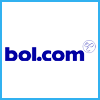 Bol.com, which one started as a Bertelsmann project, is the biggest online store in the Netherlands for years now and is gaining more and more popularity in Belgium as well. This is partly thanks to the thousands of sellers that have joined the platform that sells about 16 million items. There are no monthly fees or registration costs, but sellers do need to pay a commission for every product they sell through Bol.com. This fee ranges from 5 to 17 percent, depending on the product category.
Bol.com, which one started as a Bertelsmann project, is the biggest online store in the Netherlands for years now and is gaining more and more popularity in Belgium as well. This is partly thanks to the thousands of sellers that have joined the platform that sells about 16 million items. There are no monthly fees or registration costs, but sellers do need to pay a commission for every product they sell through Bol.com. This fee ranges from 5 to 17 percent, depending on the product category.
Beslist.nl
 Beslist.nl started as a price comparison engine, but can now be considered an online marketplace. The website attracts about 4 million visitors each month and it doesn’t ask a monthly selling fee. Sellers do need to pay a commission fee per product sold, varying from 1 to 15 percent.
Beslist.nl started as a price comparison engine, but can now be considered an online marketplace. The website attracts about 4 million visitors each month and it doesn’t ask a monthly selling fee. Sellers do need to pay a commission fee per product sold, varying from 1 to 15 percent.
Other online marketplaces from the Netherlands to keep in mind: Blokker, VidaXL and FonQ.
Non-local marketplaces with a significant market share:
| Amazon | ✔ |
| eBay | ✖ |
| Zalando | ✔ |
Belgium
Belgium‘s ecommerce is slowly getting more mature and less dependent from foreign retailers. Although, The Dutch Bol.com is a very popular online shopping platform among Belgian consumers, the country still has something to offer themselves.
Storesquare
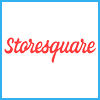 Storesquare was once a very ambitious marketplace, but in 2019 it had to buckle down a bit. Still, it enables 500 vendors to sell a total of 1 million products. Retailers don’t pay registration costs, but do need to pay a commission fee per product sold (varying from 5 to 15 percent). They also need to pay a transaction fee of 1 euro per order.
Storesquare was once a very ambitious marketplace, but in 2019 it had to buckle down a bit. Still, it enables 500 vendors to sell a total of 1 million products. Retailers don’t pay registration costs, but do need to pay a commission fee per product sold (varying from 5 to 15 percent). They also need to pay a transaction fee of 1 euro per order.
Vanden Borre
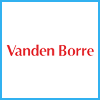 Vanden Borre is an omnichannel consumer electronics retailer from Belgium. It welcomes 10 million visitors every month and offers a marketplace with primarily audio, tv, multimedia and consumer electronics items. Selling on Vanden Borre requires a monthly selling fee of €39.99 and a commission for every product sold, varying from 8 to 14 percent.
Vanden Borre is an omnichannel consumer electronics retailer from Belgium. It welcomes 10 million visitors every month and offers a marketplace with primarily audio, tv, multimedia and consumer electronics items. Selling on Vanden Borre requires a monthly selling fee of €39.99 and a commission for every product sold, varying from 8 to 14 percent.
Non-local marketplaces with a significant market share:
| Amazon | ✔ |
| Bol.com | ✔ |
| Zalando | ✔ |
Italy
In Italy, international players have a big influence on the local ecommerce market. When we look at Italian online retail companies that are also present abroad, it’s mostly fashion retailers.
ePrice
 In 2015, Italian online retailer ePrice opened its marketplace. Seller pay a subscription fee of 29 euros and a commission from 5 to 8 percent on transactions only, depending on the product category. The subscription can be canceled at any time, without any duration obligation.
In 2015, Italian online retailer ePrice opened its marketplace. Seller pay a subscription fee of 29 euros and a commission from 5 to 8 percent on transactions only, depending on the product category. The subscription can be canceled at any time, without any duration obligation.
Non-local marketplaces with a significant market share:
| Amazon | ✔ |
| eBay | ✔ |
| Zalando | ✔ |
Spain
Spain’s ecommerce is growing steadily. Online shoppers are increasingly using marketplaces. Which local platforms are popular?
Perfume’s Club
 Perfume’s Club is a Spanish platform that sells beauty products from well-known brands. In 2022, it became a marketplace. The marketplace wants to reach a catalog of 200,000 products by the end of 2022. It is planning to grow to 1 million products by 2024.
Perfume’s Club is a Spanish platform that sells beauty products from well-known brands. In 2022, it became a marketplace. The marketplace wants to reach a catalog of 200,000 products by the end of 2022. It is planning to grow to 1 million products by 2024.
Lithuania
Online platforms, such as Vinted, from Lithuania are on the rise. But what local about marketplaces? There’s a growing amount of those, as well:
Stepinfit
 This online marketplace was founded in 2019 and specializes in sports equipments and leasure goods, though it also sells products in other categories. It has a product range of more than 100.000 products. It is active in Lithuania, Latvia, Germany and Spain.
This online marketplace was founded in 2019 and specializes in sports equipments and leasure goods, though it also sells products in other categories. It has a product range of more than 100.000 products. It is active in Lithuania, Latvia, Germany and Spain.
Sweden
Online retailers in Sweden are often a popular shopping destination for consumers from neighboring countries in Scandinavia. But local consumers also know how to find their way to Swedish ecommerce companies.
Fyndiq
 Fyndiq is a popular bargain marketplace from Sweden. The company tried expanding to Germany in 2015, but after less than a year it already closed its German operation. Sellers can apply for a free account, with no monthly fees or sign-up fees. “The only thing you need is good quality products to the lowest price possible, and you have to be a non-European merchant.” Fyndiq attracts 2 million visitors each month and about 1,700 active merchants are selling on Fyndiq.
Fyndiq is a popular bargain marketplace from Sweden. The company tried expanding to Germany in 2015, but after less than a year it already closed its German operation. Sellers can apply for a free account, with no monthly fees or sign-up fees. “The only thing you need is good quality products to the lowest price possible, and you have to be a non-European merchant.” Fyndiq attracts 2 million visitors each month and about 1,700 active merchants are selling on Fyndiq.
Cdon
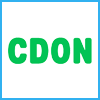 Cdon.com started in 1999 as an online retailer selling CDs. Now, it’s the largest online department store in the Nordics. Sellers need to have the same prices on the Cdon Marketplace as in their own online store. Lower prices at Cdon are also allowed. The marketplace doesn’t charge for unsold products.
Cdon.com started in 1999 as an online retailer selling CDs. Now, it’s the largest online department store in the Nordics. Sellers need to have the same prices on the Cdon Marketplace as in their own online store. Lower prices at Cdon are also allowed. The marketplace doesn’t charge for unsold products.
Tradera
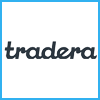 Tradera is a popular online marketplace and classifieds site from Sweden. Retailers who want to sell their products through Tradera, get their own landing page and store on Tradera.com. Over 3,000 companies have connected already. The commission rate varies from 5 to 8 percent of the sales price. The price per month depends on how many store ads are placed.
Tradera is a popular online marketplace and classifieds site from Sweden. Retailers who want to sell their products through Tradera, get their own landing page and store on Tradera.com. Over 3,000 companies have connected already. The commission rate varies from 5 to 8 percent of the sales price. The price per month depends on how many store ads are placed.
Non-local marketplaces with a significant market share:
| Amazon | ✔ |
| eBay | ✔ |
| Zalando | ✔ |
Poland
Poland isn’t your typical, mature ecommerce market, but it does have one big ecommerce power house: Allegro. It is, by far, the most popular online marketplace of Poland, with many foreign customers as well.
Allegro
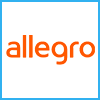 Allegro was founded in 1999 as an online auction website. For years it was part of the famous South-African ecommerce group Naspers, but in October 2016, Naspers sold it to an alliance of investor funds. Over 125,000 sellers and retailers from SMEs have registered to sell a total of over 1 million products. Sellers are allowed to sell new, refurbished as well as used items. They need to pay a listing fee, a commission on sales and a percentage of all commissions to the number of successful sales.
Allegro was founded in 1999 as an online auction website. For years it was part of the famous South-African ecommerce group Naspers, but in October 2016, Naspers sold it to an alliance of investor funds. Over 125,000 sellers and retailers from SMEs have registered to sell a total of over 1 million products. Sellers are allowed to sell new, refurbished as well as used items. They need to pay a listing fee, a commission on sales and a percentage of all commissions to the number of successful sales.
Ceneo
 Ceneo was founded in 2005 and is now the second biggest online marketplace in Poland. The platform is actually a price comparison service, which features products from 18,000 online shops, but users can shop these products by using a virtual shopping cart. There’s no monthly fee, but sellers need to pay a commission, which differs for each product category.
Ceneo was founded in 2005 and is now the second biggest online marketplace in Poland. The platform is actually a price comparison service, which features products from 18,000 online shops, but users can shop these products by using a virtual shopping cart. There’s no monthly fee, but sellers need to pay a commission, which differs for each product category.
Non-local marketplaces with a significant market share:
| Amazon | ✔ |
| eBay | ✖ |
| Zalando | ✔ |
Portugal
Portugal isn’t the most mature and popular ecommerce market in Europe, but it does have some interesting local players. Especially when it comes to online marketplaces. This might have something to do with the fact Amazon has no official presence here.
Worten Online
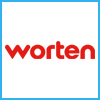 Worten is a very popular online marketplace from Portugal. The company started out as an electronics retailer (with the first store being opened in 1996), but transformed into an online marketplace. The Worten marketplace enables third-party merchants to sell their goods on the platform. In June 2019, the Portuguese company also launched its marketplace, Worten.es, in Spain.
Worten is a very popular online marketplace from Portugal. The company started out as an electronics retailer (with the first store being opened in 1996), but transformed into an online marketplace. The Worten marketplace enables third-party merchants to sell their goods on the platform. In June 2019, the Portuguese company also launched its marketplace, Worten.es, in Spain.
Dott
 Dott is a major online marketplace from Portugal. It offers thousands of products, divided into 17 categories. The ecommerce platform, founded in 2018, ships orders to customers’ homes and through over 1,500 collection points across the country. Dott is part of Grupo CTT, which operates as the national postal service of Portugal and is also a commercial group with subsidiaries active in industries like banking and ecommerce.
Dott is a major online marketplace from Portugal. It offers thousands of products, divided into 17 categories. The ecommerce platform, founded in 2018, ships orders to customers’ homes and through over 1,500 collection points across the country. Dott is part of Grupo CTT, which operates as the national postal service of Portugal and is also a commercial group with subsidiaries active in industries like banking and ecommerce.
BuyinPortugal.pt
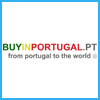 BuyinPortugal.pt is a B2B ecommerce website. It facilitates the sale of small and medium-sized businesses from Portugal to buyers from around the world. The company says it’s their mission to make it easy to do business with Portuguese brands and retailers. All sellers on the platform are legally registered company and all licenses and contact persons are verified.
BuyinPortugal.pt is a B2B ecommerce website. It facilitates the sale of small and medium-sized businesses from Portugal to buyers from around the world. The company says it’s their mission to make it easy to do business with Portuguese brands and retailers. All sellers on the platform are legally registered company and all licenses and contact persons are verified.
Non-local marketplaces with a significant market share:
| Amazon | ✔ |
| eBay | ✖ |
| Fnac | ✔ |
Switzerland
Switzerland is, on some levels, quite self-sufficient. Sometimes it relies on others, while it often also relies on its own strength. With Swiss ecommerce it’s the same. The industry has a nice mix of foreign and local ecommerce companies. With online marketplaces in Switzerland it’s about the same. About 35 percent of online retailers make use of additional digital marketplaces to generate sales, a study from the ZHAW and HWZ shows.
Ricardo
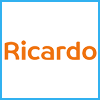 Ricardo is a very popular online marketplace in Switzerland. It was founded in 1999 and soon became a huge online retailer. The marketplace lets its 2.3 million members buy and sell both used and new things online. Listing products on Ricardo is free, but sellers do need to pay a commission fee of 9 percent on each sale.
Ricardo is a very popular online marketplace in Switzerland. It was founded in 1999 and soon became a huge online retailer. The marketplace lets its 2.3 million members buy and sell both used and new things online. Listing products on Ricardo is free, but sellers do need to pay a commission fee of 9 percent on each sale.
Digitec Galaxus
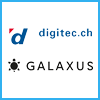 Other very popular online stores and marketplaces in Switzerland are Digitec.ch and Galaxus.ch, both part of Digitec Galaxus AG. Both its online marketplace offer a broad assortment, but Digitec is clearly focused on everything that’s related to consumer electronics, and Galaxus can be seen as an online department store. Retailers looking to sell through these platform, don’t pay any basic fees, but do need to pay a commission fee for every item sold. For EU-based merchants, Galaxus offers a customs clearance solution, the EU hub.
Other very popular online stores and marketplaces in Switzerland are Digitec.ch and Galaxus.ch, both part of Digitec Galaxus AG. Both its online marketplace offer a broad assortment, but Digitec is clearly focused on everything that’s related to consumer electronics, and Galaxus can be seen as an online department store. Retailers looking to sell through these platform, don’t pay any basic fees, but do need to pay a commission fee for every item sold. For EU-based merchants, Galaxus offers a customs clearance solution, the EU hub.
Non-local marketplaces with a significant market share:
| Amazon | ✔ |
| eBay | ✖ |
| Zalando | ✔ |
Romania
Romania is a Southeastern country in Europe with a focus on Germany, Italy and Hungary. Consumers shop at foreign websites such as Amazon and Aliexpress, but also like to shop online at local players like Altex, OLX and eMAG.
eMAG
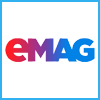 eMAG is the largest online retailer of Romania. In 2015, this ecommerce company expanded to Poland. It currently has an online marketplace in Romania, Poland and Hungary. Retailers only need to pay for the products that get sold, and also get marketing support from eMAG. As of the end of 2019, about 16,000 partner stores are connected to the eMAG marketplace, which features 4.4 million products. The website attracts 500,000 buyers on a daily basis.
eMAG is the largest online retailer of Romania. In 2015, this ecommerce company expanded to Poland. It currently has an online marketplace in Romania, Poland and Hungary. Retailers only need to pay for the products that get sold, and also get marketing support from eMAG. As of the end of 2019, about 16,000 partner stores are connected to the eMAG marketplace, which features 4.4 million products. The website attracts 500,000 buyers on a daily basis.
Cel
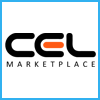 Cel.ro is an online store, managed by Corsar Online. In 2018, it opened its marketplace platform, which added an extra 400,000 products to the website. Retailers can sign up for free.
Cel.ro is an online store, managed by Corsar Online. In 2018, it opened its marketplace platform, which added an extra 400,000 products to the website. Retailers can sign up for free.
Non-local marketplaces with a significant market share:
| Amazon | ✖ |
| eBay | ✖ |
| Zalando | ✖ |
The Czech Republic
The Czech Republic has one of the fastest-growing ecommerce markets in Europe. For the period 2017-2021 a compound annual growth rate of 16 percent was predicted. Does this growth take place because of the growing popularity of marketplaces?
Heureka
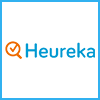 Heureka claims to be the largest ecommerce platform on Central and Eastern European markets. The group has several price-comparison shopping services, such as Ceneje, Jeftinije, Heureka and Compari. Heureka was founded in 2007 and aggregates over 150 million product offers. The website not only offers price comparison, but also the opportunity to buy from Heureka directly via its own checkout.
Heureka claims to be the largest ecommerce platform on Central and Eastern European markets. The group has several price-comparison shopping services, such as Ceneje, Jeftinije, Heureka and Compari. Heureka was founded in 2007 and aggregates over 150 million product offers. The website not only offers price comparison, but also the opportunity to buy from Heureka directly via its own checkout.
If a customer buys something from a connected shop through the Heureka shopping cart, Heureka will charge a commission from the purchases. This amount varies and depends on the product category. When a customer buys goods from a connected shop on their website, Heureka only charges them the price for a click, which also varies.
Non-local marketplaces with a significant market share:
| Amazon | ✔ |
| eBay | ✖ |
| Zalando | ✔ |
More popular online marketplaces in Europe?
Are we missing something?
We are continuously updating this extensive overview of popular online marketplaces in Europe. Of course, this list is never complete. Do you miss a certain marketplace or country? Can you provide us with more information? Then please don’t hesitate to contact us!